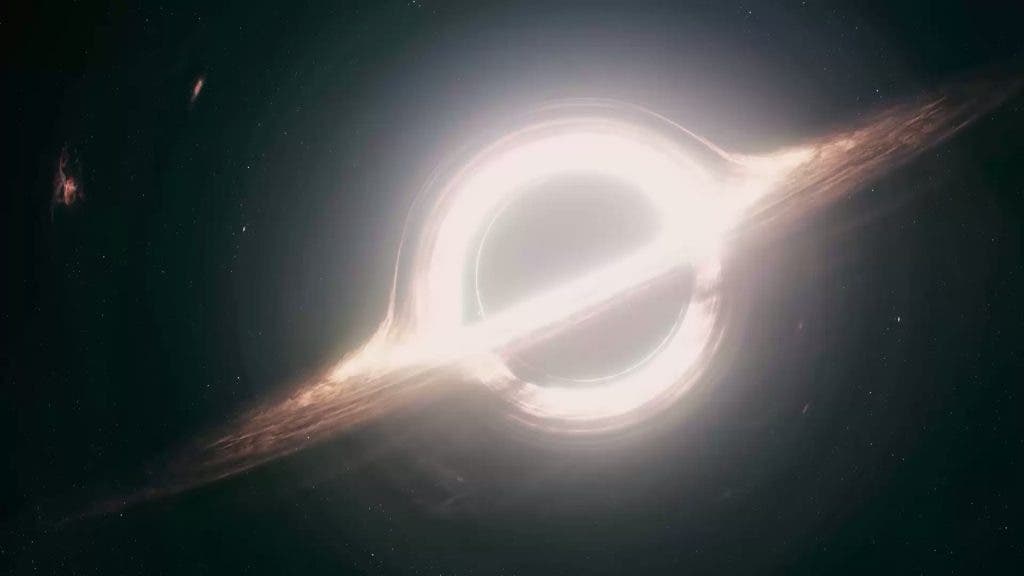Scientists think they spotted the first-ever glimpse of how black holes form from a former supernova 20 million light-years away.

Image credits Double Negative
When massive stars grow old and start running short on fuel, they explode in a dazzling display of light — a supernova. Huge quantities of matter and radiation are shot out at incredible speeds, squishing the core into something so dense that not even light can escape its gravitational pull — a leftover we call a black hole.
That’s what we think happens, anyway — we’ve never actually seen it per se. But now, an Ohio State University of Columbus team led by Christopher Kochanek might have witnessed it. They were combing through data from the Hubble Space Telescope when they observed something strange with the red supergiant star N6946-BH1.
Crunch time
The star was discovered in 2004 and was estimated to be roughly 25 times as massive as the Sun. But when Kochanek and his team looked at snaps taken in 2009, they found that the star flared a to a few million times the brightness of our star for a few months then slowly started to fade away. On the photos Hubble took in the visible spectrum, the star had all but disappeared — the only trace left of its presence is a faint infrared signature.
What happened to N6946-BH1 fits in nicely with what our theories predict should happen when a star its size collapses into a black hole. When it runs out of fuel, the star releases an immense number of neutrinos, so many that it starts losing mass. This in turn weakens its gravitational field, so it starts losing its grip on the cloud of super-heated hydrogen ions enveloping it. As the gas floats away it cools off enough for electrons to re-attach to the hydrogen nuclei.
Now, a star is basically an explosion so massive it keeps itself together under its own weight. Gravity on one hand tries to crunch everything into a point, while the pressure generated by fusion inside the star pushes it outward. While these two are in balance, the star burns away merrily. But once it starts running out of fuel, gravity wins and draws everything together. Matter sinks in the core making it so dense that it collapses in on itself, forming a black hole.
Ironically, it’s gravity that makes stars explode into supernovas — the outer layers are drawn towards the core at such speeds that they bounce off, compacting the core even further. N6946-BH1 didn’t make it to a supernova, but its core did collapse into a black hole. The team theorizes that the flaring we’ve seen is caused by super-heated gas forming an accretion disk around the singularity.
“The event is consistent with the ejection of the envelope of a red supergiant in a failed supernova and the late-time emission could be powered by fallback accretion onto a newly-formed black hole,” the authors write.
We’re still looking for answers
There are two other ways to explain a vanishing star, but they don’t really stand up to scrutiny. N6946-BH1 could have merged with another star — but it should have burned even brighter than before and for longer than a few months — or it could be enveloped in a dust cloud — but it wouldn’t have hidden it for so long.
“It’s an exciting result and long anticipated,” says Stan Woosley at Lick Observatory in California.
“This may be the first direct clue to how the collapse of a star can lead to the formation of a black hole,” says Avi Loeb at Harvard University.
Thankfully, confirming whether or not we’re looking at a black hole isn’t very difficult. The gasses that make up the accretion disk should emit a specific spectrum of X-rays as its being pulled into the black hole, which we can pick up. Kochanek says his group will be getting new data from Chandra X-Ray Observatory sometime in the next two months.
So is this a black hole? Even if they don’t pick up on any X-rays, the team says it doesn’t rule out such an object and that they will continue to look through Hubble – the longer the star is not there, the more likely that it’s a black hole.
“I’m not quite at ‘I’d bet my life on it’ yet,” Kochanek says, “but I’m willing to go for your life.”
The full paper titled “The search for failed supernovae with the Large Binocular Telescope: confirmation of a disappearing star” is still awaiting peer review, and has been published online on arXiv.






